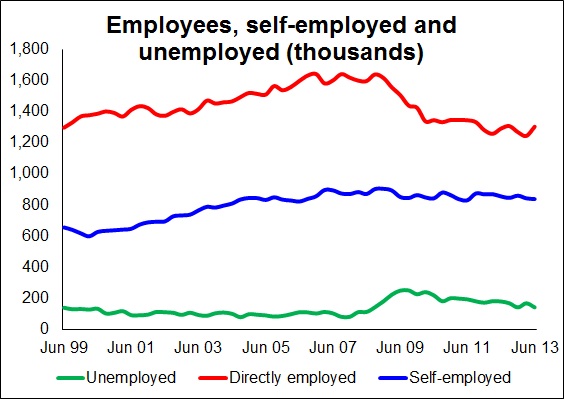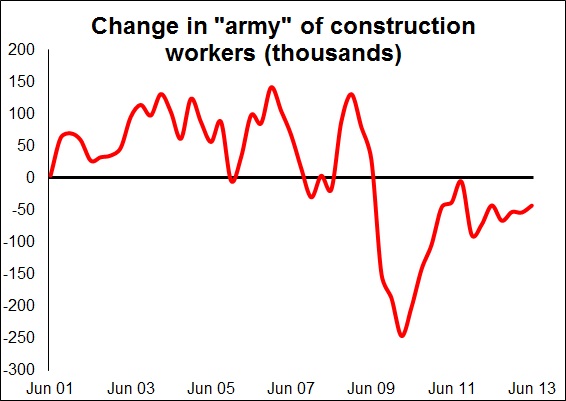Construction jobs figures provide reasons for hope and signals for action on training
It’s only one quarter’s figures and we should be cautious of statistical quirks, oddities such as last year’s Jubilympics and weather effects, but there is more promise in the latest construction jobs figures than might have been expected.
Certainly the generally improved mood will mean that firms are more willing to hold onto quality people than they might have been.
And there is a hint of this in the figures which show a small drop in the numbers, but an increase in those directly employed compared with a year ago. We see a vague hint of this in the uptick at the end of the red line in the graph taken from today’s ONS data.
 What is of particular note is the drop in the number of construction folk unemployed. Having risen to 250,000 in 2009, the number dropped to 141,000 in the second quarter of this year. This is slightly below the average over the past 10 years and well below the level when construction emerged from recession in the 1990s.
What is of particular note is the drop in the number of construction folk unemployed. Having risen to 250,000 in 2009, the number dropped to 141,000 in the second quarter of this year. This is slightly below the average over the past 10 years and well below the level when construction emerged from recession in the 1990s.
When we look at what might be described as the available army of construction workers (including those employed and the reserve army of the unemployed) we see that the numbers continue to decline. The second graph plots the difference between the total numbers each quarter compared with a year earlier.
 This and the ageing profile of those within the industry is what is beginning to tax organisations such as CITB, which is warning of a construction skills time bomb.
This and the ageing profile of those within the industry is what is beginning to tax organisations such as CITB, which is warning of a construction skills time bomb.
I have witnessed at least three of these “time bomb” warnings from the CITB over the years. They have never exploded, so far. The industry merely adapts to the circumstances it finds either through changes in techniques or the importation of labour.
But while the metaphor may be wanting, the reality is that a lack of skills does make for a far less effective and efficient industry. This is not good for the nation.
Furthermore it is a waste of national resources and societally regressive when skilled workers are shipped in from abroad when for want of training there is a huge pool of potential labour in need of work at home.
The warning signs are here. There is a far smaller pool of available labour unemployed than there was as construction emerged from recession in the 1990s. With an ageing profile retirements are likely to be more frequent, so the pool in work will probably shrink faster.
This means the need is there to start a huge training programme now.
And why not give hope to young kids with fading hopes who are looking to build a future after the worst recession in living memory.